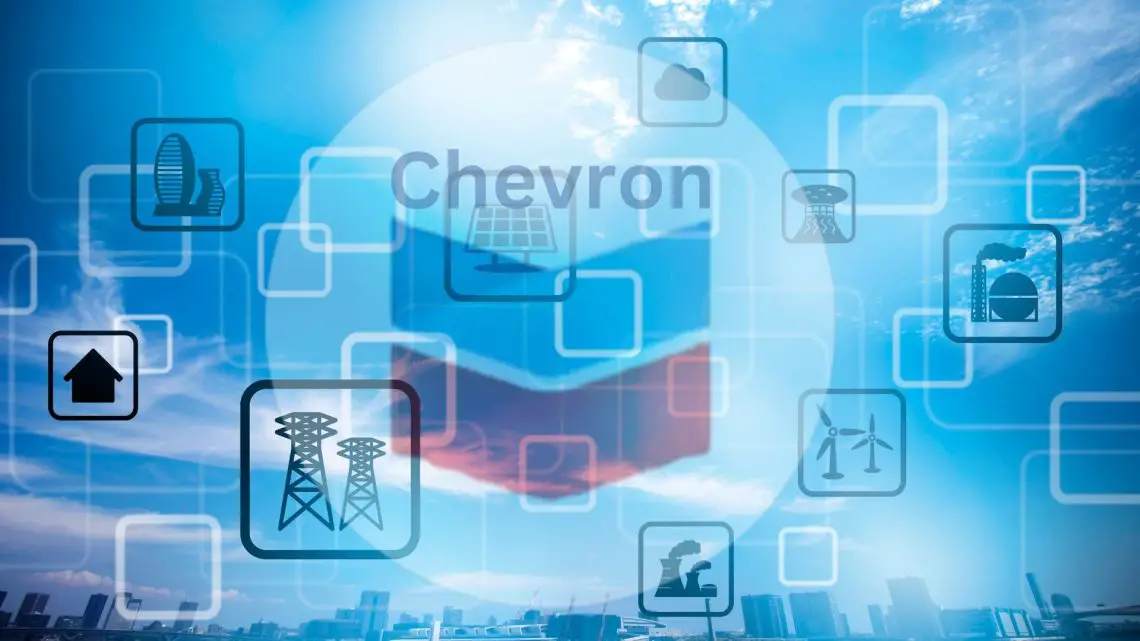
Chevron’s Bold Step Towards a Hydrogen Future: The ACES Project
November 8, 2024Chevron has announced its active participation in the Advanced Clean Energy Storage (ACES) project in Delta, Utah, a joint venture with Mitsubishi Power Americas. The initiative aims to revolutionize hydrogen storage and transportation across the western United States. Scheduled to harness the region’s unique geological features, the project seeks to convert renewable energy into hydrogen, storing it for future use, and underscores Chevron’s commitment to advancing sustainable energy solutions. Although the timeline for the green hydrogen project hasn’t been specified yet.
The ACES Project: Pioneering Hydrogen Storage
The ACES project stands at the forefront of renewable energy advancements, showcasing the potential of hydrogen to revolutionize energy storage. By converting renewable energy into hydrogen and storing it in the unique geological formations of Delta, Utah, the project promises an efficient and scalable solution for energy storage. The Delta region’s massive salt caverns provide a natural and secure environment for hydrogen storage, allowing for large-scale energy retention that can be deployed as needed.
This initiative is not just about storage; it’s about creating a robust infrastructure that facilitates the transportation and distribution of hydrogen across the western United States. ACES aims to set a benchmark for integrating hydrogen into existing energy systems, thereby paving the way for a more sustainable and resilient energy future.
A Strategic Visit: Mike Wirth’s Tour of ACES
Recently, Chevron Chairman and CEO Mike Wirth visited the ACES site in Delta, Utah, to witness firsthand the progress and potential of this innovative venture. Hosted by Austin Knight, Chevron’s Vice President of Hydrogen, the tour provided an in-depth look at the project’s capabilities and future plans.
The visit underscored Chevron’s strategic vision for hydrogen as a clean energy source and its commitment to leading the charge in hydrogen infrastructure development. Mike Wirth’s presence at the site emphasized the importance of the ACES project within Chevron’s broader energy strategy and its potential impact on the energy sector.
Key Takeaways: The Future of Hydrogen in Delta
The tour of the ACES project highlighted several critical aspects of hydrogen’s role in energy storage and distribution:
-
Hydrogen Storage at Scale: The unique geology of the Delta region allows for the storage of hydrogen in two massive salt caverns. This capability demonstrates hydrogen’s potential to serve as a large-scale energy storage solution, addressing one of the significant challenges of renewable energy: intermittency.
-
Dispatchable Hydrogen: The hydrogen stored at the ACES site is dispatchable, meaning it can be readily adjusted to meet energy demand. Initially, the project will supply the Intermountain Power Agency in Utah, showcasing its operational flexibility and reliability.
-
Expansion Plans: Chevron is strategically positioned to integrate this energy into its existing value chains. The company plans to expand its hydrogen supply to other sectors across the western United States, leveraging its extensive infrastructure and industry expertise.
Chevron’s Hydrogen-Related News Eve=nts in the Past Year
Over the past year, Chevron has made several notable advancements in the hydrogen sector, reflecting its commitment to sustainable energy solutions. Here are some key highlights:
- Chevron is investing in OneH2, a company aiming to resolve this issue by developing mobile fueling stations and localized supply solutions. This approach is designed to meet rising hydrogen demand, projected to increase from 95 million tonnes in 2022 to 150 million tonnes by 2030, as stated by the IEA. OneH2’s mobile stations offer flexibility, enabling companies to transition to hydrogen by providing fuel where needed, thus easing infrastructure development risks.
- Invested in a pilot project with Caterpillar to test hydrogen fuel technologies in mining equipment, aiming to reduce emissions in heavy industries.
-
Accelera by Cummins is providing Chevron with 5 MW electrolyzers for a solar-to-hydrogen project. The system will produce over 2 tons of hydrogen daily at fuel-cell-grade purity, sufficient to power 80 freight trucks for up to 600 miles.

- Made significant investments in hydrogen research and development initiatives, aiming to accelerate the commercialization of hydrogen technologies.
- Engaged in collaborative projects with academic institutions to advance hydrogen storage and conversion technologies.
- Expanded its hydrogen production capacity at existing facilities, highlighting its commitment to scaling up hydrogen solutions.
- Successfully trialed hydrogen as a fuel source in its operational fleet, demonstrating its practical applications in transportation.
Chevron’s proactive engagement in the hydrogen sector positions it at the forefront of the transition to cleaner energy sources. The ACES project, with its promising prospects, represents a critical step in this journey, underscoring Chevron’s role as a leader in the sustainable energy revolution.




 With over 15 years of reporting hydrogen news, we are your premier source for the latest updates and insights in hydrogen and renewable energy.
With over 15 years of reporting hydrogen news, we are your premier source for the latest updates and insights in hydrogen and renewable energy.